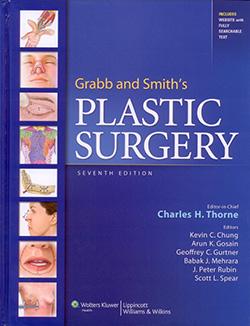If I have a specialty, it is the Facelift.
Patients frequently ask, "What technique do you use- SMAS, deep plane, short scar, MACS-lift.?" The answer is, "Whatever technique the patient needs." To have only one technique at your disposal calls to mind the adage, "If you have a hammer, the whole world looks like a nail!"
The truth is that every facelift patient is different, with an aging pattern all his/her own, with a unique skin type, with a particular pattern and color of hair, individual medical issues/medications and personal expectations about the results of his/her facelift. The patient may or may not have had facelift surgery or some other type of facial surgery in the past. An experienced facelift surgeon has many tools available and chooses the combination of techniques and procedures that best suit that patient and his/her specific facial surgery. I have performed every conceivable type of facelift procedure, and try to choose which technique is best for each patient.
Dr. Thorne's technique
That being said, there are certainly procedures I use and other procedures I do not ever use. My philosophy of facelifting, like my philosophy on all cosmetic procedures, is to do as LITTLE as possible to give the facelift patient the result he/she seeks. The goal is NOT to do as many facial surgery procedures and techniques that one can think of. This approach of minimal intervention for maximal results leads to more consistent results, fewer facelift complications, and is least likely to result in an "operated look" – the look that all facelift patients want to avoid.
The technique I use most often consists of skin undermining, vertical elevation of the posterior SMAS and platysma, suspension of the cheek fat, and selective liposuction and lipoinjection. I do NOT redrape the skin vertically. I do not like the appearance of neck skin pulled up on to the face because the neck skin has different pigmentation, different creases and belongs in the neck! I frequently combine the facelift procedure with elevation of the outer part of the brows. See section on browlifting. I abhor conventional browlifts, which tend to make people look older, strange and surprised.
Goal of facelifting
The goal when performing a facelift, or any type of facial surgery, is to make the patient look like herself/himself, just a crisper version. An occasional surgery patient wants/needs a more dramatic change but this is the exception, not the rule.
Harmony and avoiding the "facelifted look."
Almost every patient for facial surgery tells me that they don't want a "facelift look." What do they mean? In addition to avoiding over-correction in any area, the key is to keep the face looking harmonious as a whole. If one part of the face is out-of-synch with the rest of the face, it does not look natural. It looks artificial or "man made." An occasional facial surgery patient will ask me to correct only the neck. I rarely agree to such a request because I fear creating disharmony--a tight neck with uncorrected jowls! Not a good look. My goal in facial surgery is to make you look BETTER, more harmonious than when you started, not to create a disharmonious, operated appearance. I would rather have your friends say, "She looks great," than say, "She had a facelift!"
To see before and after images, please click Facelift.
To read Dr. Thorne's facelift chapter in The Plastic Surgery Book, please click PDF Chapter or Chapter Online Version.

Dr. Thorne is the Editor-in-Chief and the author of several chapters in Grabb and Smith's PLASTIC SURGERY, 7th Edition.
